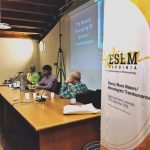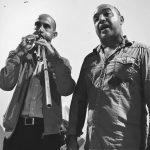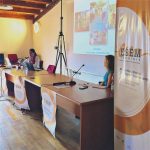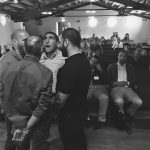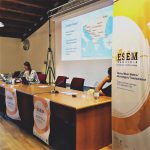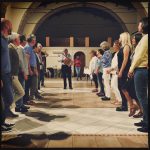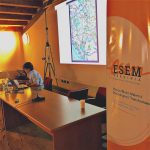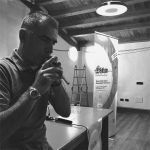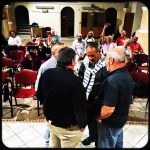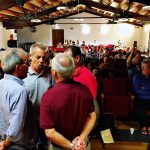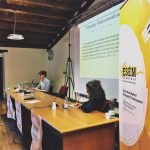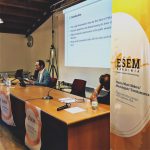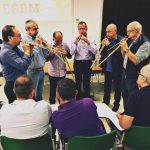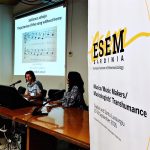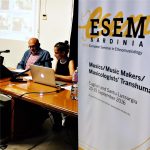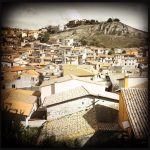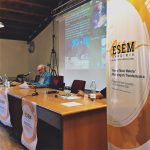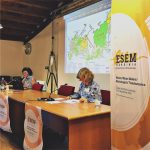Ignazio Macchiarella, Marco Lutzu, eds., Sardinian Masters’ Talks.
prod. Labimus/Department of Cultural History and Territorial Heritage of Cagliari University, 2016 (23’).
Shown during the ESEM 2016 – Sardinia
with subtitles (English or Italian)
Whatever the approach, every investigation on human music making does, of course, imply relationships –in terms of a contact/exchange– between researcher and a group of people. In other words, doing ethnomusicology means, whatever the case, having to do with persons. Ultimately, ethnomusicology is a matter of inter-individual relations, so that, in a sense, the quality of these relations gives the measure of the quality of a research project.
As we all know, the crucial relevance of the “music makers’ point of view” and of the relationship “scholar/music makers” comes up several times in the writings of John Blacking:
«some answer to these questions (cognitive musical abilities) will emerge when we know better how people think about different sets of musical symbols, and relate them to other symbols. The analysis of meaning can be achieved only by dialectic between informants and analysts, in which there is a confrontation of two kinds of technical knowledge and experience, and informants share in the intellectual process of analysis. This has to be done as far as possible in the field, and the process will be rather different from that usually associated with interview» (Blacking 1995: 233).
In order to foster the emergence of the local actors’ point of view, extremely significant contributions can come from approaches based on the strategies of dialogue as a strategy for interpretative studies. Roughly, it means aiming to build up systematic collaborations oriented towards achieving negotiated dialogues (beyond the simple juxtapositions of different opinions) between the scholar’s perspective and the local music-makers’ awareness, which might lead to a closer mutual comprehension. This aim has inspired the (ethno)musicological work carried out by Cagliari University over the last ten years or so (Macchiarella 2014). Inter alia, it has resulted in close friendships with some music makers who have collaborated in different initiatives throughout the years. In actual fact, a very peculiar amities have arisen between scholars and different music makers, that imply complete and mutual trust, a great willingness for cooperation, and yet a kind of complicity.
This is the background of the video Sardinia Masters’ Talks. The video is a montage containing talks by five of our long-standing best music-friends (since 1982) who are, at the same time, among the most celebrated performers (all over Sardinia and beyond) of the most representative traditional practices: a tenore and a cuncurdu multipart singing, guitar accompanied singing, and launeddas playing. They are: Giuseppe Brotzu, from Castelsardo (SS), singer and ex-prior of the confraternity of Santa Croce (see Lortat-Jacob 1996); Franco Davoli, from Orgosolo (NU), boghe and leader of the Tenore quartet Supramonte (who is also one of the editors of Pilosu-Tenore Supramonte 2017); Daniele Giallara, from Cuglieri (OR), not only one of the most celebrated Sardinian singers of the boghe a chiterra (guitar accompanied singing) but also a cuncordu singer of his village; Tonino Leoni, from Samatzai (Ca), launeddas player and music disciple of the great maestro Dionigi Burranca (he is one of the authors in Lutzu 2012); Bachisio Masia, from Bonnanaro (SS), both guitar player within the cantu a chiterra music practice and singer of the confraternity’s a cuncordu quartet.
We explained to them that our project was aimed at providing a contribution on their ideas about ethnomusicology and about what ethnomusicologists do (and do not do) and/or what eventually they should do (or should not do) with particular regard to the contemporary situation of the music practice in which they are specialized. We stressed that their opinions would be presented in a video addressed to the participants at the ESEM 2016 seminar or rather to an assembly of ethnomusicologists coming from around the world who were meeting in Cagliari and Santu Lussurgiu.
They all agreed immediately. To shoot the video we met Bachisio, Daniele, and Giuseppe in Bonnanaro at Bachisio’s home (Bernard Lortat-Jacob was with us); Tonino, at my University office in Cagliari, and Franco in Abbasanta, during a village feast. The first four men spoke in Italian, the last one using sardu, the Sardinian native language.
Of course, Marco and I did not ask them to answer a questionnaire or anything like that. We simply told them a few words about the ESEM society and its founder John Blacking (also providing a few short quotations taken from Blacking’s works, translated into Italian, and related to the topic of music as social action) and about the themes of the Sardinian meeting.
For each talk, we shot about 20-23 minutes of discussion – not more. Marco and I edited the video, trying to highlight the main themes according to our opinions (to save time, we eliminated our voices). Of course, the video is not exactly a dialogical outcome; dialogues need time! One can say it is the first step of a dialogical path. Nevertheless, I hope the materials will result interesting and they might provide points for reflection. [I.M.]
References
John Blacking, 1995 Music, Culture and Experience, Selected Papers of John Blacking, Reginald Byron ed., University of Chicago Press, Chicago.
Bernard Lortat-Jacob, 1996, Canti di Passione, Lim, Lucca.
Marco Lutzu, 2012, Launeddas, in Enciclopedia della Musica Sarda, L’Unione Sarda, Cagliari, vol. 11.
Ignazio Macchiarella, 2014, Exploring micro-worlds of music meanings, «El oìdo pensante», anno 2, n. 1, pp. 1-16.
Sebastiano Pilosu- Tenore Supramonte, eds., 2017, Il canto a tenore di Orgosolo nelle raccolte del CNSMP (1955-1961), Squilibri, Roma.

